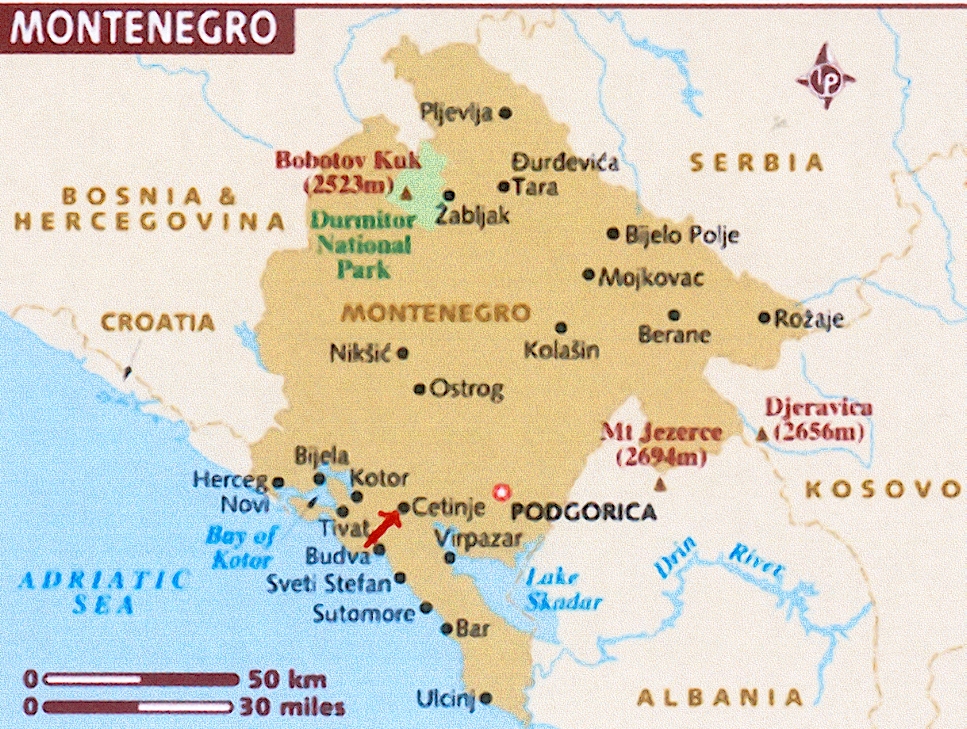The Queensland Universal Postal Union 1½d postcard has the ’Rays 33′ on the printed stamp with a MACKAY/ D/ JY 21/94/ QUEENSLAND postmark alongside, as well as a transit BRISBANE/ JY 24/ 94/ QUEENSLAND postmark. In addition there is a transit SUEZ/ A/ 27 ( ) 94, as well as a partial transit of CONSTANTINOPLE (date illegible). The postcard is addressed to Frau Leonie B. Bergner, Citinje (sic), Monte Negro (sic), Europe (Figure 1).
The message on the reverse is as follows: Dear Madam, Yours to hand. Am sorry you cannot (meet?) us with stamps– Useless to send back. Would you kindly hand over to some one who would send us a few exchanges for them. If so would esteem it a favour. Your lists noted. Will be laid before Society. Thanking you for trouble taken. Yours truly, Thom Brand, Mackay Q’land July 20/94. There are 4 postal markings, a large oval and 3 circular items of which only the top circle is legible as Constantinople (Figure 2).
The use of the name Montenegro began in the 15th century when the Crnojevic dynasty began to rule the Serbian principality of Zeta; over subsequent centuries Montenegro was able to maintain its independence from the Ottoman Empire. From the 16th to 19th centuries, Montenegro became a theocracy ruled by a series of bishop princes; in 1852, it was transformed into a secular principality. After World War I, Montenegro was absorbed by the Kingdom of Serbs, Croats, and Slovenes, which became the Kingdom of Yugoslavia in 1929.
At the conclusion of World War II, it became a constituent republic of the Socialist Federal Republic of Yugoslavia. When the latter dissolved in 1992, Montenegro federated with Serbia, first as the Federal Republic of Yugoslavia and, after 2003, in a looser union of Serbia and Montenegro. In May 2006, Montenegro invoked its right under the Constitutional Charter of Serbia and Montenegro to hold a referendum on independence from the state union. The vote for severing ties with Serbia exceeded 55% – the threshold set by the EU – allowing Montenegro to formally declare its independence on 3 June 2006. Two maps of Montenegro show the countries that surround Montenegro, the capital city, Podgorica and the city in which Frau Bergner lived, Cetinje (red arrow), are seen in Figures 3 & 4.

It is situated in Southeastern Europe, between the Adriatic Sea and Serbia at geographic coordinates 42 30 N, 19 18 E and the total area is 13,812 sq km. It has a Mediterranean climate, hot dry summers and autumns, and relatively cold winters with heavy snowfalls inland. The population is 672,180 (July 2009 est.). The ethnic groups are Montenegrin 43%, Serbian 32%, Bosniak 8%, Albanian 5%, other (Muslims, Croats, Roma (Gypsy)) 12% (2003 census). The religions are Orthodox 74.2%, Muslim 17.7%, Catholic 3.5%, other 0.6%, unspecified 3%, atheist 1% (2003 census). The languages spoken are Serbian 63.6%, Montenegrin (official) 22%, Bosnian 5.5%, Albanian 5.3%, unspecified 3.7% (2003 census). The capital is Podgorica.
At the time of the postcard (1894), the country was ruled by Prince Nicholas (from 1860-1910) who later became the only King of Montenegro, Nicholas I (from 1910-1918) (Figures 5 & 6).